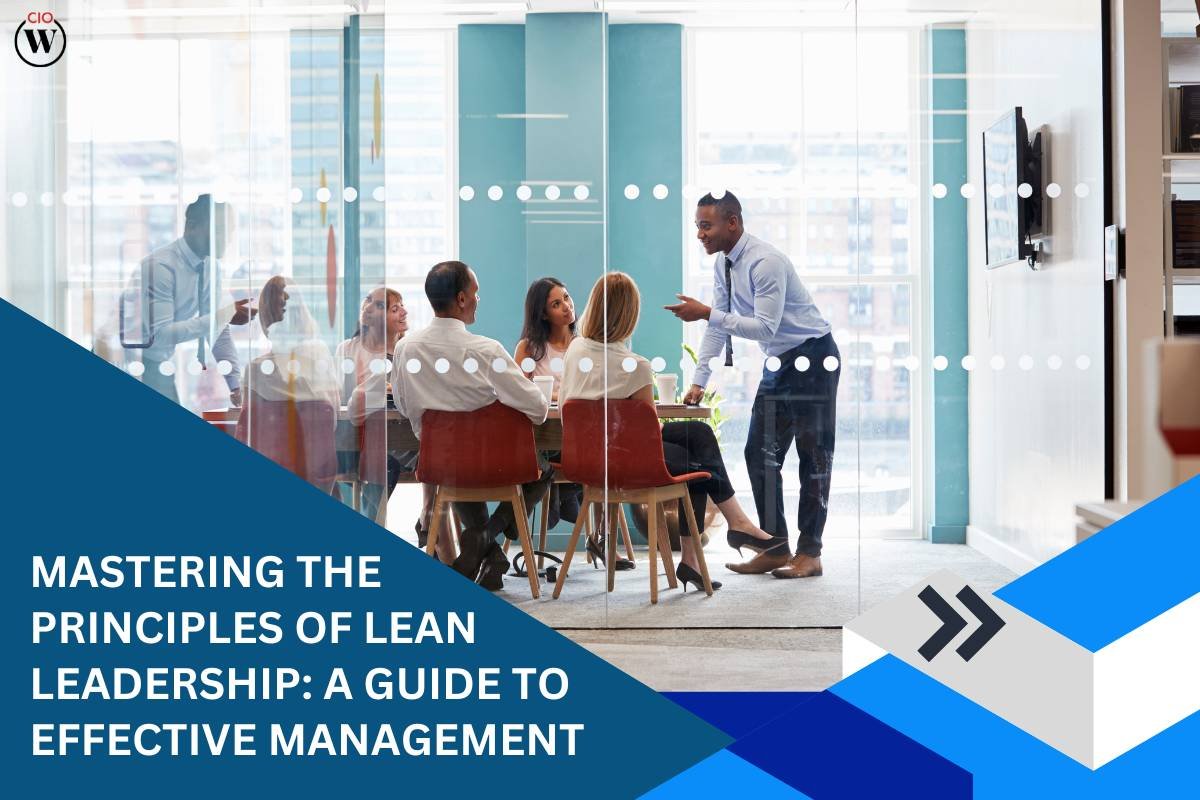In the fast-paced and ever-evolving landscape of modern business, effective leadership is paramount to success. Among the various leadership philosophies and methodologies, Lean leadership stands out as a powerful approach to driving efficiency, fostering continuous improvement, and empowering teams to excel. In this comprehensive guide, we delve into the principles of Lean leadership, exploring its core concepts, strategies, and practical applications.
Understanding Lean Leadership
At its essence, principles of lean leadership are rooted in Lean management, a methodology originally developed by Toyota in the 1950s. It emphasizes the relentless pursuit of efficiency, waste reduction, and value creation for customers. In the context of leadership, Lean principles are applied to inspire and guide teams towards optimal performance and innovation.
Key Principles of Lean Leadership
1. Respect for People:

When we talk about the principles of lean leadership, respect for people is something we cannot ignore. Central to Lean leadership is the fundamental respect for every individual within the organization. Leaders acknowledge the unique skills, perspectives, and contributions of team members, fostering a culture of inclusivity, trust, and collaboration.
2. Continuous Improvement (Kaizen):
Lean leaders prioritize continuous improvement as a core organizational value. They encourage experimentation, embrace failure as a learning opportunity, and promote a mindset of ongoing refinement and innovation in processes, products, and services.
3. Gemba (Go to the Source):
Effective Lean leaders actively engage with their teams at the gemba, or the place where work is done. By observing processes firsthand and directly interacting with frontline employees, leaders gain valuable insights, identify opportunities for improvement, and build strong relationships with their teams.
4. Value Stream Mapping:
Lean leaders utilize value stream mapping to analyze and optimize end-to-end processes, from customer request to delivery. By visualizing the flow of value and identifying non-value-added activities, leaders can streamline workflows, eliminate waste, and enhance overall efficiency.
5. Empowerment and Decentralization:
Lean leadership emphasizes decentralization and empowerment, granting teams the autonomy and authority to make decisions and drive change at the frontline. This decentralized approach fosters agility, responsiveness, and creativity, enabling organizations to adapt swiftly to changing market conditions and customer needs.
6. Just-in-Time (JIT):
Lean leaders implement just-in-time principles to minimize waste and maximize efficiency in production and service delivery. By synchronizing workflows to customer demand and eliminating excess inventory and lead times, leaders optimize resource utilization and enhance responsiveness to customer needs.
7. Visual Management:

Visual management techniques, such as Kanban boards and performance dashboards, are integral to Lean leadership. These tools provide real-time visibility into work progress, performance metrics, and bottlenecks, enabling leaders and teams to make informed decisions and take timely corrective actions.
8. Standardization:
Lean leaders emphasize the importance of standardizing processes and workflows to ensure consistency, quality, and reliability. By establishing clear standards and best practices, leaders facilitate smoother operations, reduce variability, and create a foundation for continuous improvement. This is one of the most essential principles of lean leadership.
9. Flow Optimization:
Lean leaders prioritize the optimization of workflow and process flow to minimize interruptions, bottlenecks, and delays. By streamlining the flow of work and materials, leaders enhance efficiency, reduce lead times, and improve overall productivity. Through techniques such as value stream mapping and process reengineering, leaders identify opportunities to eliminate waste, standardize work processes, and create smooth, uninterrupted workflows.
10. Customer Focus:
Lean leaders maintain a relentless focus on understanding and meeting customer needs and expectations. By placing the customer at the center of decision-making processes, leaders drive innovation, quality improvement, and value creation. Through methods such as customer feedback mechanisms, market research, and customer journey mapping, leaders gain insights into customer preferences, pain points, and evolving requirements, enabling them to deliver products and services that exceed expectations and drive customer satisfaction and loyalty.
Practical Applications of Lean Leadership
1. Implementing Lean Principles in Leadership
To effectively implement Lean principles in leadership, organizations must cultivate a culture of continuous learning, experimentation, and improvement. Leaders play a pivotal role in driving this cultural transformation by exemplifying Lean values, providing guidance and support, and empowering teams to embrace change.
2. Coaching and Mentorship

Lean leaders act as coaches and mentors, guiding their teams towards excellence and self-empowerment. Through active listening, constructive feedback, and personalized development plans, leaders help individuals identify their strengths, address weaknesses, and unlock their full potential.
3. Problem-Solving and Root Cause Analysis
Lean leaders employ structured problem-solving methodologies, such as root cause analysis and the Plan-Do-Check-Act (PDCA) cycle, to address challenges and drive continuous improvement. By encouraging a systematic approach to problem-solving and fostering a culture of accountability and learning, leaders empower teams to tackle complex issues effectively.
4. Gemba Walks and Gemba Boards
Gemba walks, conducted by leaders at the frontline, are a cornerstone of Lean leadership. By engaging directly with employees, observing work processes, and asking probing questions, leaders gain valuable insights, identify improvement opportunities, and demonstrate their commitment to continuous improvement. Gemba boards, prominently displayed in work areas, serve as visual management tools to track performance, highlight problems, and drive accountability.
5. Leadership Development and Succession Planning
Effective Lean leadership requires a strong focus on leadership development and succession planning. Organizations must invest in training and development programs to nurture future leaders, cultivate a pipeline of talent, and ensure continuity in leadership capabilities. By fostering a culture of leadership excellence and grooming emerging leaders, organizations can sustain their Lean journey and drive long-term success.
Conclusion
In conclusion, the principles of Lean leadership offer a powerful framework for driving organizational excellence, fostering continuous improvement, and empowering teams to achieve their full potential. By embracing Lean values, cultivating a culture of respect, empowerment, and continuous improvement, and applying practical tools and techniques, leaders can inspire positive change, enhance performance, and create lasting value for customers, employees, and stakeholders alike. As organizations navigate the complexities of the modern business landscape, Lean leadership emerges as a guiding philosophy to navigate uncertainty, drive innovation, and achieve sustainable growth.









